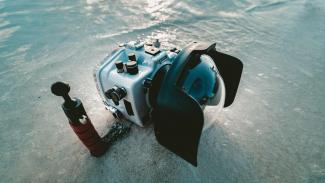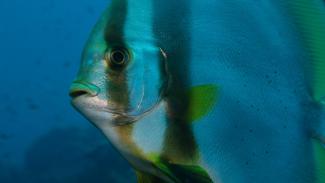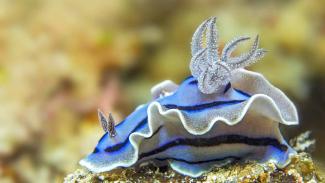Have you recently purchased an underwater housing for your camera? Maybe you feeling a little unsure how to set-up your new system correctly and are feeling in need of some tips and advice.
Don't despair. No matter what brand your housing, whether it is a simple own-brand housing or a state-of-the-art set-up, there are steps you can take every time you take your camera into the water to ensure that it is set-up correctly.
Simply follow our step by step guide to setting up a camera and housing to find out more...

First Steps
Firstly, choose a clean dry environment to set-up your camera and housing, making sure you have enough light to be able to see what you are doing clearly.
Wherever possible, avoid hot, humid, dusty, dark or dirty places as this will only lead to problems later.
Give yourself plenty of time to set-up your underwater camera housing and don't rush. By taking your time and being careful, you are less likely to make mistakes and will ensure that you can make many happy dives with your housing.
Ensure your camera is placed carefully into the housing and is not interfering with any o-rings or seals. If it doesn't feel like it fits snugly, don't force it. Take it out and start again, or check the manufacturer instructions.
Remove the o-ring carefully from the housing. To avoid scratching or nicking the o-ring, place pressure on the o-ring with two fingertips (but not your nails) and move your fingers towards each other until a section of the o-ring pops up and is easy to remove. Avoid using a sharp object to remove the o-ring from it's groove as this will damage it. Some housings also come with tools to help you remove o-rings.
Final checks
Check your o-ring for dust, hair or nicks using your fingertips, then carefully replace it back in position. If the o-ring is particularly dirty, you can rinse it in fresh water and dry it with a lint-free cloth.
Do not use any old cloth, or a piece of clothing as this will put dust, dirt and hair back onto the o-ring.
Grease your o-ring every three or four dives. Be careful & thorough when applying grease. O-ring grease attracts bits of dirt & debris which can cause flooding.
Carefully seal your underwater housing, ensuring the catch is fully locked & never force your housing to close. If it is difficult to close, then open the housing, remove any obstruction & try again.
After closing, if your housing allows you to, make a visual check of the o-ring for any irregularities or debris.
Turn the camera on and make sure it is working properly. Take and review a few photos and check each button to make sure it is aligned well and working properly.
Submerge your underwater housing in water, giving it a gentle shake to remove any trapped air and then leave it for at least a minute, watching carefully for bubbles. If you notice a constant stream of bubbles, then the housing is not sealed correctly and you need to start again.
If you see no bubbles, you housing is ready to go and it's time to get yourself ready and start taking some great underwter photos.
You might also enjoy...
Togian Islands
The remote Togian Islands lie in the middle of Tomini Bay in central Sulawesi. While difficult to reach, the islands offer great conditions for scuba-diving all year round.
Protected on almost all sides by the tentacle-like arms of Sulawesi, this large bay is reputably the calmest in the world.
Lankayan
The picturesque island of Lankayan is now regarded as one of Malaysia’s finest dive destinations.
The island, which is just off east the coast of Borneo in the Sulu Sea, has only one resort, ensuring uncrowded dive sites and plenty of relaxation.
Alor
Alor lies to the east of Flores & north of Timor Island. Divers who venture this far will be rewarded with exceptional diving away from the crowds.
The area is characterised by two main forms of diving - current swept dives with a high chance to find pelagics; and world-class muck diving.
Choosing the right dive spot
Phil North
If you are an avid underwater photographer, choosing the right destination for your dive holiday or expedition can make a huge difference to your overall experience and enjoyment. It can also make a huge difference to the results on your camera.
Buyer's guide to underwater cameras
Tara North
If you are reading this article, then you probably have the bug. No doubt you’ve seen some incredible underwater photos in dive magazines or had a go and are eager for more.
There’s no doubt that having your own camera & housing is essential for your new hobby. There is such a wide range of options available today though, so how do you begin to choose?
Buyer's guide to underwater video
Tara North







